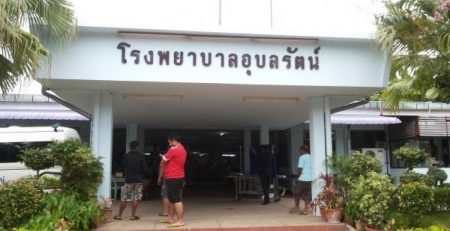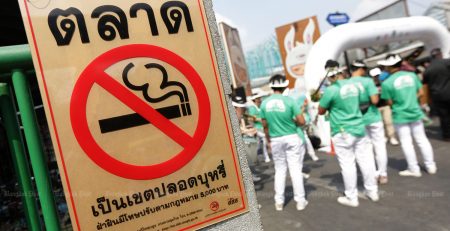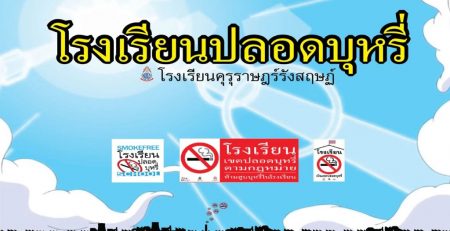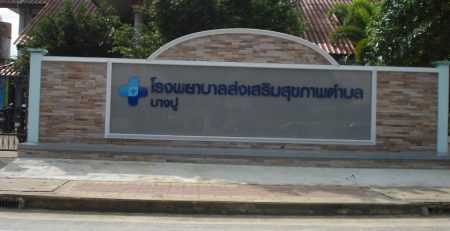Brainstorming Workshop Meetings of the Cigarette Cessation Service
The Tobacco Control Department has established the Cigarette Cessation Service System development and the Integrated transfer project. The purposes of the establishment were to: (1) develop projects effectively, (2) provide best practices to all levels of smokers, (3) build collaboration and understanding among departments and networks in order to drive relevant activities, and (4) enable smokers to reduce or give up smoking. For this reason, the Brainstorming workshop meetings on the Cigarette Cessation Service System development and the Integrated transfer project were conducted and participants of these project meetings involved the 2nd strategy committees of the National Tobacco Control plan whose mandate was to follow the WHO FCTC, Article 14.
The cigarette cessation service and the integrated transfer patterns for smokers living in communities are described for the 3 pilot provinces:
Phitsanulok Province
The first step of the working pattern in Phitasnulok province is to survey information in its communities and later return feedback in order to provide better cigarette cessation servicesto the community. This process is carried out by hospital staff from Prompiman Hospital. Smokers who complete the cigarette cessation program are eligible to receivea certificate from the Prompiman district-chief officer. Moreover, monitoring is carried out for those smokers by community leaders, volunteers who will set appointments with those smokers at Banhankai District Hospital. The strategy used for the cigarette cessation service in the cigarette cessation clinics is 1S 3C (S = Search, C = Cessation, C = Campaign, C = Close Follow up) with funding supplied for staff training by the Health Professional Network for a Non smoking Thai Society. The policy of this province is to search for smokers in communities using application forms, working in groups, and making agreement for recording and monitoring. The collaborative work among staff in this province is divided among 4 groups as shown below:
- Community leaders, volunteers, committee
- Staff of the Banhankai district hospital / Bangkok health service places
- Staff of other health service places
- Professional health networks
Krabi Province
The working pattern in Krabi province begins with a capable provincial team inKrabi setting the public stage to provide knowledge of smoking measures, cigarette diseases, and law enforcement. The goal of the public stage is to encourage people to be healthy. The first step of driving this measure emphasizes public relationships, campaigning and advertisement. Results showthat executives are interested to participate in those activities. For this reason, committees come from all levels of all networks and monitoring has been driven with entertainment places and entrepreneurs. Moreover, Krabi establishes community models along with people models, builds integration for testing fees for chronic diseases, provides awards for being village models, builds integration of cigarette cessation along with chronic diseases, conducts student activity contests, establishes multi-careers for cigarette cessation and includes knowledge exchange.
A prominent aspect of this provinces approach is to emphasis community collaboration by establishing an Integrated provincial working network in communities, and community volunteers (which is in the Tarleu community). Since it is difficult to have doctors provide advice in chronic disease clinics, the solution is to build community models or area models. At this moment, the Tarleu community was able to establish a cigarette cessation service and the Krabi technical college participated in this project.Previously, the number of teachers who smoked before entering this project was 90%. After participating in cigarette cessation, the number of teachers smoking dropped since the number who quit smoking approached 90%. The conclusion following the model of 1S 3C indicates that the strength of cigarette cessation is divided into 2 models: (1) regular cigarette smokers, and (2) chronic disease cigarette smokers. In term of Close Follow Up, the chronic disease cigarette smokers were transferred to better treatment places.
Chachoengsao province
The working pattern in Chachachoengsao province begins by encouraging community volunteers to identify smokers. The distinguishing point for this province is that there are a lot of factories in this province. So, driving tobacco control in this province is forwarded by inviting those factories to be smoke free factories, identifying smokers and encouraging them to quit smoking.
Further work processes to drive progress in the 3 pilot provinces
- After following work processes in the manual, results show suggestions for weak areas or gaps that need to be revised in order to release a complete manual and to indicate problem realities. The presentation was set for11 12March 2013 to show working results to the Professional Health Network.
- Community leaders are the first important target group in driving cigarette cessation in communities. Community volunteers are very useful in terms of being a community center because they are influential people in communities and secondly are also an important source for data collection. Moreover, senior people are also important to encourage their children to quit smoking.
- Monitoring schedule was set twice per area which is at the beginning of March and April.
- The project will expand systemically to 9 areas in order to set systemic models.
- The National Health Security Office (NHSO) Thailand provided fund support to the Professional Health Network for staff training in 6 areas.
Threats and opportunities
- The integration of the Quitline 1600 in communities
- Public relations should be carried out and also coordinated with the Quitline
- Tobacco Control Research and Knowledge Management Center (TRC) provides support to staff to issue distilled lessons.
- methods to drive the Quitline into communities:
- Community volunteers advice smokers to access the Quitline
- Smokers access the Quitline by themselves
- Provide opportunities for the Quitline to advise community volunteers, set trainings which enable volunteers to be able to give advice to people living in communities.
- The quit smoking service patterns
- Providing only advice on quitting smoking to smokers is the most successful method at the community level. However, providing advice along with using medicine is little used in the quit smoking service.
- Community volunteers are very helpful for driving the quit smoking service in communities. Community volunteers submit the names of smokers who have expressed an intention to quit to the Quitline, and then the Quitline calls and provides advice to them on quitting smoking.
- In term of smokers who stay at home and do not want to receive advice on quitting smoking, it is thought that they may not want to quit smoking. In this case, an attempt to invite those smokers to receive advice should be carried out to change their view on quitting smoking. For this reason, community volunteers submit the names of those smokers to the Quitline to follow up with further steps.
Conclusion
- Community volunteers are important people to help smokers to quit smoking by using the community as a central unit. However, religious leaders, schools, and senior clubs are also an influence.
- Patient transferring processes in community should be convenient, save time, be easy to access and not be complex.
- The Quitline is an alternative for youth and women who do not prefer to use quit smoking clinics.
- The quit smoking models for children and adolescents comes from the Office of the Basic Education Commission, Ministry of Health.
- There are 2 manuals currently available. One manual is for medical professionals and the other one is for the community.
Brainstorming Workshop Meetings of the Cigarette Cessation Service System Development, Integration, Transfer Project
Organized by Tobacco Control Department, Ministry of Public Health
By Miss PrapaphunIiamanun
Date: 10 January 2013
Venue: Richmond Hotel, Nonthaburi












